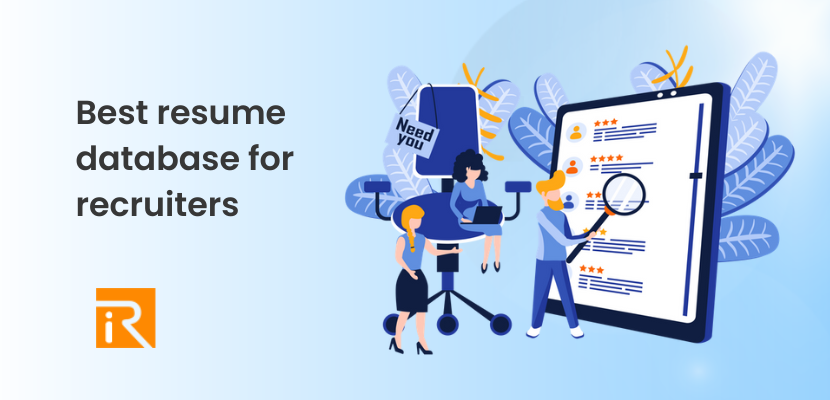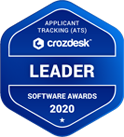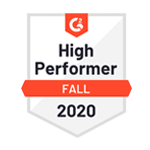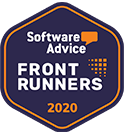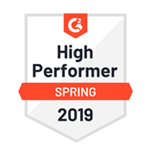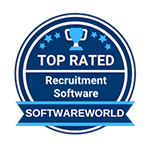Finding qualified candidates has never been more challenging. With traditional job postings attracting hundreds of unqualified applicants, smart recruiters are turning to resume databases to proactively source top talent. These powerful platforms give you access to millions of candidate profiles, allowing you to find the perfect match before your competitors even know they exist.
Whether you’re a small recruitment agency working with tight budgets or an enterprise-level organization seeking specialized talent, choosing the right resume database can transform your hiring success. This comprehensive guide explores the best resume database options available in 2025, from free platforms perfect for startups to premium solutions that deliver enterprise-grade functionality.
We’ll examine 15 leading resume database platforms, reveal advanced search techniques that uncover hidden talent, and provide a complete cost-benefit analysis to help you make informed decisions. By the end of this guide, you’ll know exactly which resume database fits your recruitment needs and budget.
What is a Resume Database?
A resume database is a centralized digital repository containing thousands or millions of candidate resumes that recruiters can search, filter, and access based on specific criteria. Unlike traditional job boards where you wait for candidates to apply, resume databases enable proactive talent sourcing by allowing you to search through existing candidate profiles using keywords, location, experience level, and other relevant filters.
How Resume Databases Work for Employers?
Resume databases function as sophisticated search engines designed specifically for recruitment. Candidates upload their resumes either directly to the platform or through job applications, creating searchable profiles that include work history, skills, education, and contact information. Recruiters then use Boolean search operators, keyword filters, and advanced criteria to identify candidates who match their specific requirements.
Most platforms update their databases daily with new resumes from active job seekers, ensuring access to fresh talent pools. Advanced resume databases also use AI-powered matching algorithms that suggest relevant candidates based on your job descriptions and hiring patterns.
Resume Database vs Job Board: Key Differences
The fundamental difference lies in the sourcing approach. Job boards operate on a “post and pray” model where you advertise positions and hope qualified candidates apply. Resume databases flip this dynamic, empowering you to actively hunt for talent rather than passively waiting for applications.
Resume databases also provide access to passive candidates—professionals who aren’t actively job searching but might be open to the right opportunity. Research shows that 70% of the global workforce consists of passive candidates, representing a massive talent pool that traditional job postings can’t reach.
ROI Impact on Recruitment Efficiency
Organizations using resume databases report significant improvements in recruitment metrics. Time-to-hire typically decreases by 35-50% since you can immediately identify qualified candidates rather than waiting for applications. Cost-per-hire often reduces by 40-60% as you spend less on job advertising and can focus budget on premium database access instead of multiple job board postings.
Most importantly, quality of hire improves substantially when you can evaluate entire career trajectories and skill sets before making contact, leading to better matches and reduced turnover.
Resume Search Engine for Employers: How to Find the Right Platform
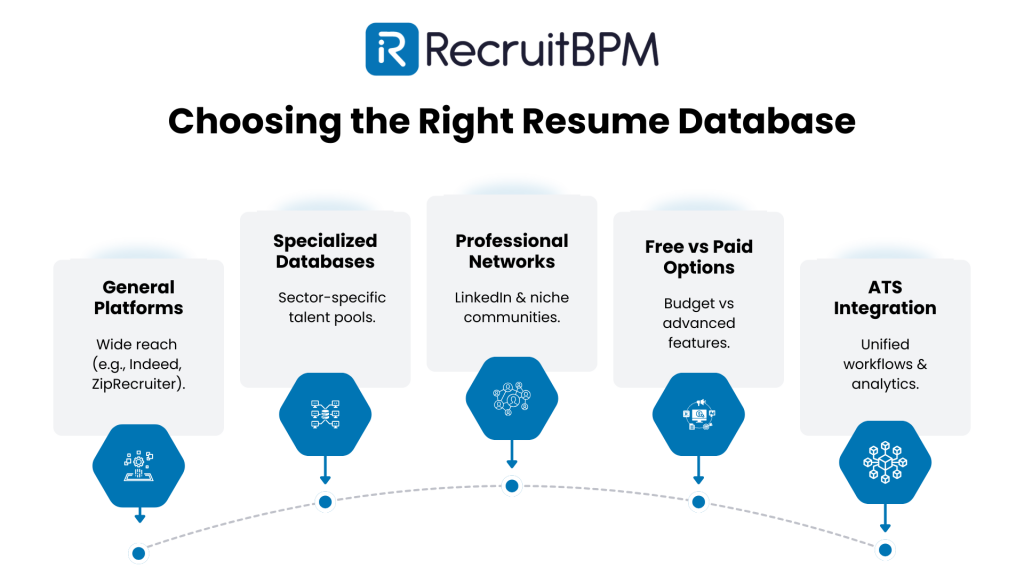
Choosing the optimal resume search engine requires understanding your specific recruitment needs, volume requirements, and integration capabilities with existing systems.
Types of Resume Search Engines Available
General Resume Databases like Indeed Resume and ZipRecruiter offer broad coverage across all industries and experience levels. These platforms excel for high-volume hiring and provide the largest candidate pools, making them ideal for filling common positions across multiple departments.
Specialized Industry Platforms focus on specific sectors like technology (Dice), creative industries (Behance), or executive roles (Ladders). These targeted databases offer higher-quality matches for specialized positions but may have smaller overall candidate pools.
Professional Network Platforms such as LinkedIn Recruiter combine resume databases with social networking features, providing deeper insights into candidate backgrounds, connections, and professional activities.
Choosing Between Free vs Paid Resume Databases
Free resume databases work well for small businesses with occasional hiring needs or when recruiting for entry-level positions. They typically offer basic search functionality and limited candidate contact options, but can provide excellent value for budget-conscious organizations.
Paid resume databases justify their cost through advanced features like unlimited searches, detailed candidate analytics, CRM integration, and priority customer support. They’re essential for recruitment agencies, high-volume hiring organizations, or when filling specialized roles that require precise matching.
Integration with Applicant Tracking Systems (ATS)
Modern resume databases should integrate seamlessly with your existing ATS to create unified candidate management workflows. Look for platforms offering API access, direct data import capabilities, and two-way synchronization that automatically updates candidate information across systems.
This integration eliminates duplicate data entry, ensures consistent candidate tracking, and provides comprehensive recruitment analytics that combine sourcing and hiring metrics.
Free Resume Database Options for Budget-Conscious Recruiters
Free resume databases provide excellent starting points for organizations with limited recruitment budgets, offering access to substantial candidate pools without subscription fees.
Best Free Resume Search Platforms in 2025
Indeed Resume leads the free database category with over 180 million resumes from 60 countries. The platform allows unlimited searches with basic filters for location, experience, and job title. While contact information requires payment, you can evaluate candidate suitability before investing in premium access.
Jobvertise positions itself as “The World’s Largest FREE Job and Resume Database” with over 1 million searchable resumes and 20,000 new additions monthly. The platform offers completely free resume access with color-coded posting dates to identify recently active candidates.
PostJobFree provides access to over 1.5 million job entries and thousands of resumes. While contact information is restricted to premium users, the free search functionality helps identify promising candidates before upgrading to paid contact access.
JobSpider offers unrestricted resume searching and candidate contact through their free platform. The database focuses on diversity and inclusion, making it valuable for organizations prioritizing diverse hiring initiatives.
Limitations of Free Resume Databases
Free platforms typically impose significant restrictions that can impact recruitment effectiveness. Common limitations include restricted contact information access, limited daily search quotas, basic filtering options, and reduced customer support.
Resume quality and recency can also vary significantly on free platforms, as many candidates may have uploaded profiles months or years ago without updates. Additionally, free platforms often lack advanced features like saved searches, automated alerts, or detailed candidate analytics.
When to Upgrade from Free to Paid Solutions?
Consider upgrading when your recruitment volume exceeds free platform limits, when you need immediate candidate contact capabilities, or when time-to-hire becomes critical for business operations. Paid platforms also become essential when recruiting for specialized roles requiring advanced search filters or when you need integration with existing recruitment systems.
Top 15 Resume Database Platforms: Detailed Comparison & Pricing
Indeed Resume Database – 180M+ Resumes Indeed’s massive resume database provides unparalleled candidate reach across all industries and experience levels. The platform offers sophisticated filtering options including salary expectations, work authorization status, and career level classifications. Pricing starts at $100 monthly for Indeed Resume Standard with 30 candidate contacts, scaling to $250 monthly for Professional access with unlimited contacts and advanced analytics.
ZipRecruiter Resume Database – 53M+ Resumes ZipRecruiter’s AI-powered platform analyzes over 53 million resumes with 320,000 new additions monthly. Their matching technology automatically suggests relevant candidates based on job descriptions and hiring patterns. The database integrates seamlessly with ZipRecruiter’s job posting platform, creating comprehensive recruitment workflows. Premium plans range from $399 to $999 monthly depending on features and volume requirements.
LinkedIn Recruiter – 810M+ Professional Profiles LinkedIn Recruiter provides access to the world’s largest professional network with over 810 million members across 200+ countries. The platform offers 20+ advanced search filters, InMail messaging capabilities, and detailed candidate insights including mutual connections and activity history. Recruiter Lite starts at $1,439 annually, while full Recruiter access costs significantly more but provides unlimited searches and enhanced team collaboration features.
Budget-Friendly Resume Platforms
MightyRecruiter – 20M+ Resume Database MightyRecruiter combines a substantial 20+ million resume database with AI-powered matching algorithms at competitive pricing. The platform offers 10 free resume views for trial purposes, with paid plans starting at $189 monthly for basic access scaling to $999 monthly for enterprise features. Their machine learning technology automatically ranks candidates by relevance, streamlining the screening process.
Jobvertise – World’s Largest FREE Database Jobvertise delivers exceptional value through completely free resume access and unlimited candidate contact capabilities. The platform maintains over 1 million searchable resumes with 20,000 monthly additions, all accessible without subscription fees. Premium features starting at $32.99 monthly provide enhanced search capabilities and priority listing visibility.
PostJobFree – 1.5M+ Job Entries PostJobFree offers dual functionality as both job board and resume database, providing access to over 1.5 million job entries and thousands of candidate resumes. The free version allows unlimited resume searching, with premium subscriptions unlocking contact information and promoted job posting capabilities.
Ladders – Executive & $100K+ Professionals Ladders specializes exclusively in connecting employers with high-earning professionals seeking $100,000+ positions. The platform maintains profiles of over 10 million senior-level candidates including C-suite executives, VPs, and specialized professionals. Recruiter Lite access costs $159 monthly, while full access requires $499 monthly but provides advanced executive search capabilities.
FlexJobs – Remote & Flexible Work Candidates FlexJobs focuses specifically on professionals seeking remote, part-time, freelance, and flexible work arrangements. The platform offers free resume database access for approved employers, making it ideal for organizations embracing remote work policies. The registration process ensures quality control by screening both employers and candidates.
Behance – Creative Industry Professionals Behance serves as both portfolio platform and resume database for creative professionals including designers, architects, photographers, and digital artists. The platform allows employers to review candidate portfolios alongside traditional resumes, providing comprehensive creative talent evaluation. Access remains free, making it excellent for agencies and companies hiring creative roles.
Wellfound (AngelList) – Startup & Tech Talent Formerly AngelList Talent, Wellfound specializes in connecting startups and tech companies with qualified candidates. The platform offers free access to their talent database along with integrated ATS functionality and customized hiring workflows. Wellfound particularly excels for technical roles and startup environments seeking entrepreneurial candidates.
RecruitBPM Integration – CRM + Resume Search RecruitBPM enhances resume database functionality by integrating multiple data sources into a unified CRM platform. This approach combines traditional resume searching with relationship management, communication tracking, and analytics reporting. The integrated approach eliminates data silos and provides comprehensive candidate lifecycle management.
JobSpider – Diversity-Focused Database JobSpider emphasizes diversity and inclusion through their comprehensive resume database that prioritizes underrepresented talent pools. The platform offers completely free resume searching and candidate contact, making it valuable for organizations committed to building diverse teams. Advanced filtering options help identify candidates from specific demographic backgrounds and communities.
Resume Database Software: Features & Functionality Guide
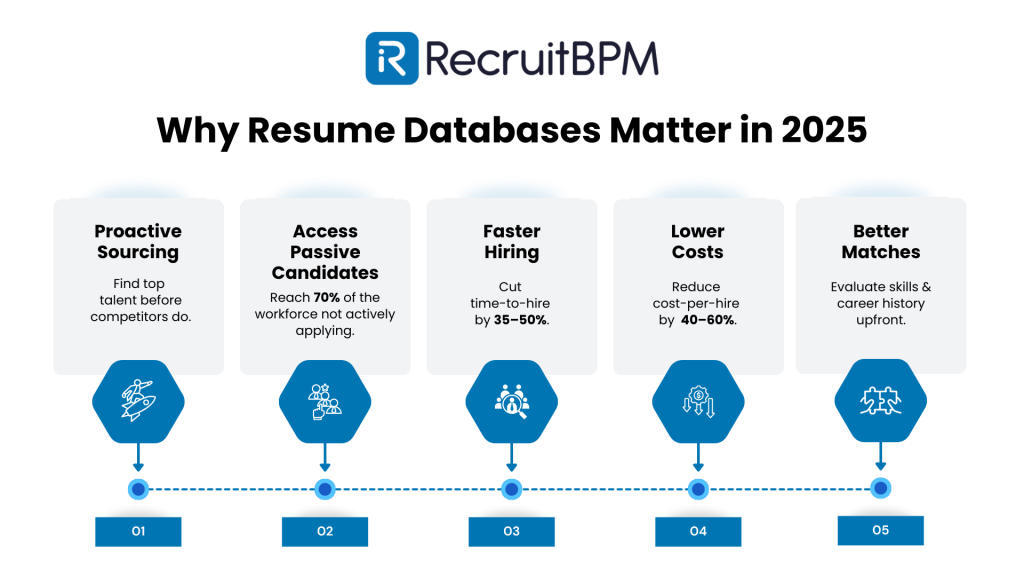
Modern resume database software extends far beyond basic search capabilities, offering sophisticated tools that streamline entire recruitment workflows.
Essential Search & Filter Capabilities
Advanced Boolean search functionality enables precise candidate targeting using operators like AND, OR, and NOT to combine multiple criteria. Geographic filtering helps identify local candidates or those willing to relocate, while experience-level filters separate entry-level candidates from senior professionals.
Skill-based searching allows you to find candidates with specific technical competencies, certifications, or software proficiencies. Industry and company filters help identify candidates with relevant sector experience or competitive intelligence opportunities.
Contact Management & Candidate Tracking
Comprehensive candidate relationship management tracks all interactions, communications, and status updates throughout the recruitment process. Automated email sequences enable nurturing campaigns for passive candidates, while integrated calendar systems schedule interviews and follow-ups.
Notes and rating systems allow team collaboration and candidate evaluation standardization. Tag-based organization helps categorize candidates for different roles or future opportunities.
Analytics & Reporting Features
Detailed sourcing analytics reveal which databases produce the highest-quality candidates and best response rates. Time-to-hire tracking identifies process bottlenecks, while cost-per-hire calculations demonstrate platform ROI.
Candidate pipeline reporting shows conversion rates at each recruitment stage, enabling process optimization and capacity planning. Team performance metrics help identify top-performing recruiters and successful sourcing strategies.
Mobile Access & User Experience
Mobile-responsive platforms enable candidate sourcing from anywhere, crucial for modern recruiting teams. Intuitive interfaces reduce training time and improve adoption rates across recruitment teams.
Real-time notifications ensure immediate response to new candidate matches or messages. Offline capabilities allow resume review and note-taking without internet connectivity.
How to Search Resume Databases Effectively?
Mastering advanced search techniques dramatically improves candidate discovery efficiency and match quality.
Boolean Search Strategies for Resume Discovery
Using AND, OR, NOT Operators Boolean operators enable precise candidate targeting by combining multiple search criteria. Use AND to require multiple terms: “software engineer” AND “Python” AND “remote” finds candidates with all three qualifications. OR expands searches: “accountant” OR “financial analyst” OR “controller” captures various finance roles. NOT excludes unwanted results: “marketing manager” NOT “assistant” eliminates junior-level positions.
Keyword Optimization Techniques Effective keyword selection requires understanding how candidates describe their skills and experience. Search for both formal job titles and informal descriptions: “software developer” AND (“programmer” OR “coder”). Include industry-specific terminology and common abbreviations: “CPA” OR “Certified Public Accountant”.
Use proximity operators when available to find related terms within specific distances: “project management” NEAR/5 “agile” finds resumes mentioning both concepts within five words of each other.
Advanced Filtering by Location, Experience & Skills
Geographic filters should account for remote work preferences and relocation willingness. Many platforms allow radius-based searching around specific cities or ZIP codes. Consider time zones for remote positions and visa requirements for international candidates.
Experience-level filtering requires understanding industry progression patterns. Senior-level searches might specify 8+ years experience, while mid-level positions typically require 3-7 years. Use graduation date filters to identify recent graduates for entry-level positions.
Skills filtering works best when combining hard and soft skills relevant to role success. Technical positions might require specific programming languages, while sales roles need CRM experience and communication abilities.
Setting Up Automated Resume Alerts
Automated alerts ensure continuous candidate discovery without manual searching. Create alerts for high-priority positions using specific keyword combinations and filter criteria. Set frequency preferences—daily alerts for urgent hiring needs, weekly for general pipeline building.
Use multiple alert variations for the same position to capture different candidate descriptions and job title variations. Review alert performance regularly and adjust criteria based on result quality and volume.
Candidate Sourcing Best Practices
Effective sourcing requires systematic approaches that balance efficiency with personalization. Create standardized email templates for different candidate types and situations, but always customize messages with specific details from candidate profiles.
Track response rates across different outreach methods and message types to optimize communication strategies. A/B test subject lines, message length, and call-to-action phrasing to improve engagement rates.
Maintain consistent follow-up schedules—typically 3-5 touchpoints over 2-3 weeks for initial outreach sequences. Use varied communication channels including email, LinkedIn messages, and phone calls when appropriate.
Free vs Paid Resume Databases:
Understanding the true costs and benefits of free versus paid resume databases enables informed investment decisions that align with recruitment goals and budget constraints.
Hidden Costs of “Free” Resume Platforms
Free resume databases often impose restrictions that create hidden costs through reduced efficiency and missed opportunities. Limited daily search quotas may require multiple platforms to achieve adequate candidate coverage, increasing time investment and complexity.
Restricted contact information access forces additional steps to reach candidates, potentially losing them to faster competitors. Basic filtering options may produce irrelevant results, requiring manual screening that increases recruiter time costs.
Poor candidate quality on some free platforms can lead to higher interview-to-hire ratios, increasing overall recruitment costs through wasted time and resources.
ROI Calculation Framework for Paid Databases
Calculate resume database ROI by comparing total costs against recruitment improvements. Include subscription fees, training costs, and integration expenses in total investment calculations.
Measure benefits through improved time-to-hire, reduced cost-per-hire, higher candidate quality scores, and increased recruiter productivity. A typical calculation might show $10,000 annual database costs producing $50,000 savings through faster hiring and reduced agency fees.
Consider long-term value including pipeline building, candidate relationship development, and market intelligence gathering that extends beyond immediate hiring needs.
Budget Recommendations by Company Size
Small businesses (1-50 employees) typically benefit from free or low-cost resume databases ($0-$500 monthly) focusing on local markets and common positions. Prioritize platforms offering good free tiers with upgrade options as hiring volumes increase.
Mid-size companies (51-500 employees) should invest in comprehensive paid platforms ($500-$2,000 monthly) providing advanced features and integrations. Multiple database access becomes valuable for specialized recruiting needs.
Enterprise organizations (500+ employees) require enterprise-grade solutions ($2,000+ monthly) with unlimited access, advanced analytics, team collaboration features, and dedicated support. Multiple specialized databases often provide better coverage than single large platforms.
When Free Resume Search Makes Sense
Free resume databases work well for occasional hiring needs, entry-level position recruitment, local market focus, or when building initial candidate pipelines. They’re also valuable for testing recruitment strategies before investing in premium solutions.
Organizations with strong employment brands may succeed with free platforms since candidates actively seek them out. Non-profit organizations and startups with limited budgets can achieve good results through strategic free platform usage.
Legal & Compliance Considerations for Resume Databases
Resume database usage must comply with various legal requirements governing candidate privacy, equal employment opportunity, and data protection.
GDPR & Data Privacy Compliance
European GDPR regulations require explicit consent for processing personal data, including resume information. Ensure chosen databases obtain proper candidate consent and provide data portability options. Maintain records of data processing activities and candidate consent documentation.
US state privacy laws increasingly mirror GDPR requirements, particularly in California, Virginia, and Colorado. Review database vendor privacy policies and data processing agreements to ensure compliance with applicable regulations.
Equal Employment Opportunity (EEO) Guidelines
Search criteria must avoid discriminatory filtering based on protected characteristics including age, race, gender, religion, or nationality. Focus on job-related qualifications and avoid keywords that might inadvertently screen out protected groups.
Document search strategies and hiring decisions to demonstrate non-discriminatory practices. Regular audit searches and hiring outcomes to identify potential bias patterns in database usage or selection criteria.
Candidate Consent & Contact Permissions
Respect candidate privacy preferences and contact restrictions clearly indicated in profiles. Many candidates specify preferred contact methods, availability windows, or confidentiality requirements that must be honored.
Maintain opt-out mechanisms and unsubscribe options for all candidate communications. Document consent for ongoing communications and recruitment marketing activities.
Data Security & Storage Requirements
Choose resume database vendors with appropriate security certifications including SOC 2, ISO 27001, or similar standards. Ensure data encryption in transit and at rest, secure access controls, and regular security audits.
Establish data retention policies that align with business needs and legal requirements. Implement secure data deletion procedures for outdated candidate information or withdrawn consent situations.
How To Measure Resume Database ROI?
Effective measurement requires tracking specific metrics that demonstrate resume database impact on recruitment efficiency and quality.
Time-to-Hire Improvements
Track average time-to-hire before and after database implementation, segmented by position type and seniority level. Typical improvements range from 30-50% reduction in time-to-hire for positions where database sourcing produces qualified candidates.
Measure time-to-contact metrics showing how quickly you can identify and reach qualified candidates compared to traditional job posting methods. Database sourcing often enables same-day candidate identification versus weeks of waiting for applications.
Cost-per-Hire Reduction
Calculate total recruitment costs including database subscriptions, recruiter time, advertising expenses, and agency fees. Compare cost-per-hire across different sourcing methods to identify most efficient approaches.
Database sourcing typically reduces external agency dependency, potentially saving 15-25% of annual salary in placement fees. Factor these savings into ROI calculations along with reduced job board advertising costs.
Quality of Hire Metrics
Track new hire performance ratings, retention rates, and promotion speeds for database-sourced candidates compared to other sourcing methods. Higher-quality matches often result from reviewing complete candidate profiles before contact.
Measure hiring manager satisfaction with database-sourced candidates through structured feedback collection. Track whether database hires meet or exceed performance expectations more consistently than other sourcing methods.
Candidate Response Rates & Engagement
Monitor email open rates, response rates, and interview acceptance rates for database-sourced outreach compared to other recruitment communications. Personalized messaging based on detailed profile information often produces higher engagement rates.
Track candidate progression through recruitment pipelines to identify where database-sourced candidates excel or struggle compared to other sources. Use this data to optimize both sourcing and screening processes.
Choose the Right Resume Database with RecruitBPM
Selecting the optimal resume database requires understanding your specific recruitment challenges, growth projections, and integration requirements with existing systems.
How RecruitBPM Enhances Resume Database Access?
RecruitBPM transforms traditional resume database usage by integrating multiple data sources into a unified candidate relationship management platform. This approach eliminates the inefficiencies of managing separate database subscriptions and provides comprehensive candidate lifecycle tracking.
The platform’s AI-driven matching capabilities analyze candidates across multiple databases simultaneously, identifying the best prospects regardless of their original source. Advanced analytics provide insights into which databases produce the highest-quality candidates for specific roles, enabling data-driven sourcing decisions.
Integrated CRM + Resume Search Workflow
RecruitBPM’s integrated approach combines resume database searching with comprehensive relationship management, creating seamless workflows from initial candidate discovery through successful placement. Automated data synchronization ensures candidate information stays current across all systems without manual updates.
The platform’s communication tracking and automated nurturing capabilities transform one-time database searches into ongoing candidate relationships. This approach maximizes the value of database investments by building talent pipelines that serve multiple hiring needs over time.
Get Started with RecruitBPM Today
Modern recruitment success requires more than just access to candidate resumes—it demands intelligent integration of multiple data sources, relationship management capabilities, and analytics-driven optimization. RecruitBPM provides the comprehensive platform that transforms traditional resume database usage into strategic talent acquisition advantage.
Ready to revolutionize your recruitment process? Discover how RecruitBPM can enhance your resume database strategy while building lasting candidate relationships that drive consistent hiring success. Schedule your demo today and experience the future of integrated talent acquisition.


